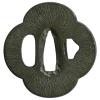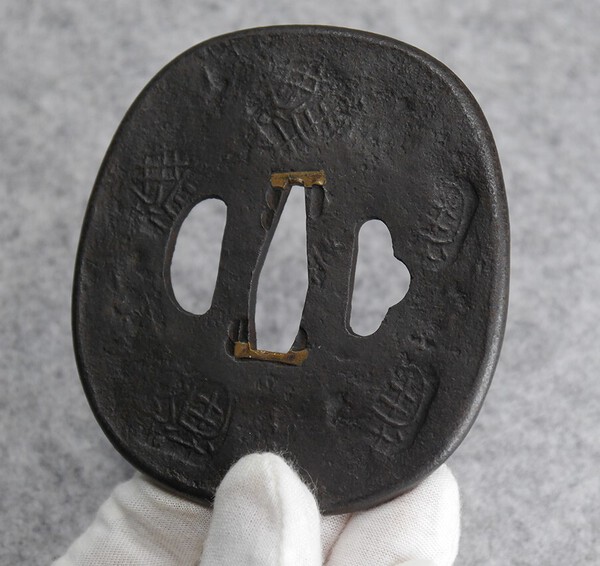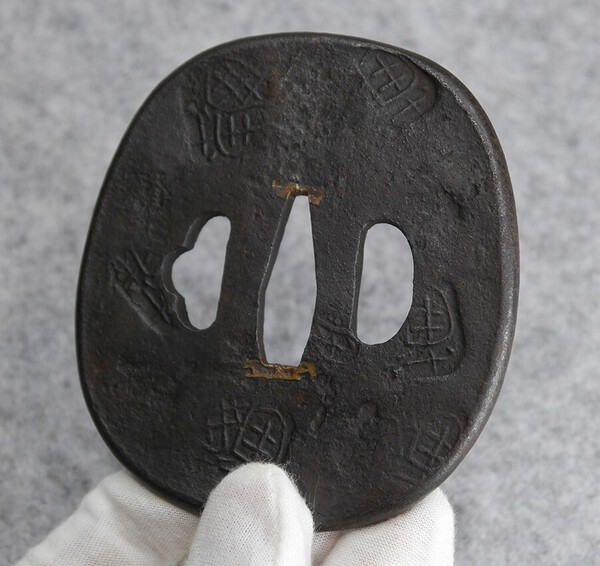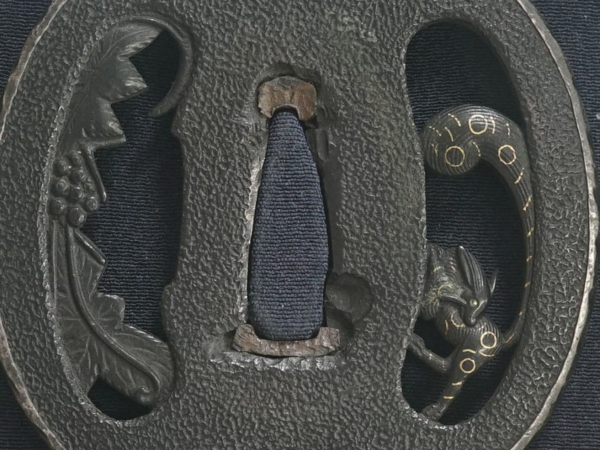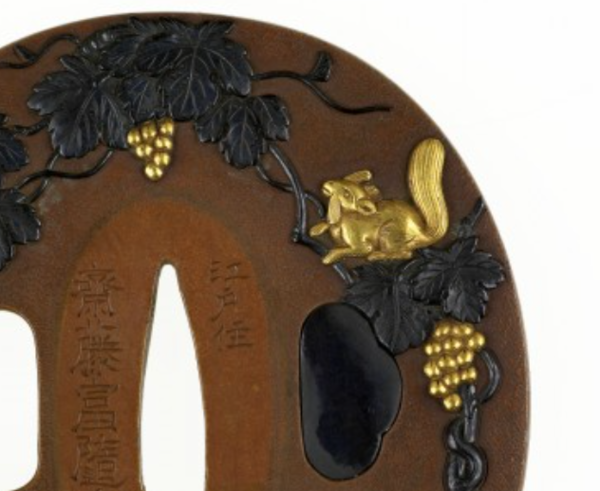-
Posts
277 -
Joined
-
Last visited
-
Days Won
1
Content Type
Profiles
Forums
Events
Store
Downloads
Gallery
Everything posted by Iekatsu
-
Very nice. A little oil should be fine, but replacing the fabric sections will require a professional and the final result will not necessarily reflect the original. I would be interested to see the top of the uppermost plates, are they concave?
-
Looks like Ichiguchi work to me, likely early-mid Edo period. Do you have any close up images of the Haraidate-dai?
-
Price reduction 150 USD Shipping included anywhere in the world.
-
Thanks for the kind words, it really is a nice piece in hand. Maybe some new photos in better light will help it find a new home.
-
Bump, before the sale is pulled.
-
Yodare-kake/Tare, much like Shikoro are not really interchangeable, the plates are curved to fit the original piece, I would recommend not altering them. If you are looking to have them relaced get in contact with Mr Bluming, he is based in Holland. https://www.facebook.com/jonmbluming
-
Unfortunately they don't really keep their website up to date, you will have to get in contact with them to get their latest catalogue. Also if you let them know what you are after they maybe be able to source something.
-
Try getting in contact with Kinokuniya, but be aware that the vast majority of Maedate on the market are post Edo and authentic examples can cost as much as a kabuto. http://www.kinokuniya.tv/
-
Roger, Most examples of this type, including the one posted in this thread are constructed from a single plate, the designs are carved into the surface. Mauro, Odd that the first is papered as Tachi-kanagushi, the design elements are clearly oriented edge up.
-
I display my Tachi Tsuba Edge down if they are unaltered, this is also how they are displayed in the Tokyo National Museum catalogues.
-
Ron, Thanks for sharing the reverse images, I think its a nice piece and id be happy to have it in my collection. Roger, I agree, but I don't think this example is San-mai.
-
Great Menuki Ron, I quite like them. In relation to categorisation and period. It does not fit stylistically with Ezo work, they would likely paper to Ko-kinko. As for period I think they likely date to the late Muromachi-Momoyama period.
-
I think what is being mistaken for a fish, could actually just be whiskers, these are Edo examples but you get the idea.
-
A nice example Ron, I agree that it likely dates to the Momoyama period, do you have an images of the reverse?
-
Glen, In order to make this a useful study you are going to have to find examples with reasonable provenance, that is examples that are manufactured in Japan and can be reliable dated to the Edo period or earlier. In the case of the "Sekibun belly flop", it was clearly cast after it was mounted as the cast includes Tagane ato. Dr Lissenden is talking about the process of using a solid master to create multiple wax masters for use in lost wax casting. This is actually a redundant step if you are pressing the master directly into the molding material, which is likely what was done at the Nara site based on the evidence of the molds themselves. It should also be noted that creating molds is skilled labour, its not just pressing things in clay, there are many considerations that have to be taken into account to get good results. There is even evidence that elements were added to the designs after the impressions were made.
-
In the case of the Nara site, it is unlikely that wax was used in the casting process, the evidence points to the use of a solid master that would be pressed into a fine clay to create a male and female mold halves. It should also be noted that the molds would be destroyed in the casting process and could not be reused, a new mold having to be created for each cast.
-
The examples found at the Nara site are definitely molds, some of the discarded molds still have failed castings inside. Casting sword fittings in bronze and later brass is pretty well established, but again this site has nothing to do with the casting of Iron. I have some concerns with some of the indicators used to determine whether or not a Tsuba is cast in Dr Lissenden's thesis, I think some of them could be explained by other factors, but without being able to see the examples he examined it would be difficult to refute. Dr Lissenden proposes the following indicators: 1. The presence of surface granularity and porosity, with or without 'sand bubbles'. 2. The presence of investment material — a residue of a red, granular nature was discounted. 3. The presence of 'feathering' in the openwork. 4. A lack of crispness in the incised areas. Perhaps you could post some examples for us to discuss in more detail.
-
This was a soft metal casting site, it is well documented and there was no evidence of iron casting. Fittings produced from such workshops still exist in significant numbers, they are just not really interesting to most collectors. Interesting to see how little effort is required to break up the cast kettles.
-
The use of Gangi-shino continues well into Mid Edo, but I agree that it is also a feature seen on Momoyama Dou.
-
Interesting find, You must feel like an archaeologist.
-
I agree that similar elements can be seen in early production, but this particular Dou has features that that don't really align with a Momoyama attribution. It has detachable Kusazuri, which appear to be original, at least there are no ana visible where lacquer has flaked away (if present it would imply a later modification). The Oshitsuke-no-ita lacks the distinctive concave center and the the Waki-ita are rather flat. To me at least this points to an early Edo attribution.
-
Not really my area of research, but I have seen no credible evidence to support cast iron Tsuba.
-
The Hachi (helmet bowl) looks like it might have some age, but we would need some more pictures of the interior and Mabizashi (visor) to be more certain. The rest of the armour looks to be Edo. Be careful with family attributions, published or not, these attributions are often not particularly credible.
-
Cast Tsuba are relatively common pre-Edo, most will paper either as Ko-kinko or Kagami-shi. There is no credable link between mirror makers and cast fittings, Kagami-shi being a misnomer. Cast Tsuba in this period are almost always bronze and later brass (early Edo) , I would be suspicious of anything in any other material.


